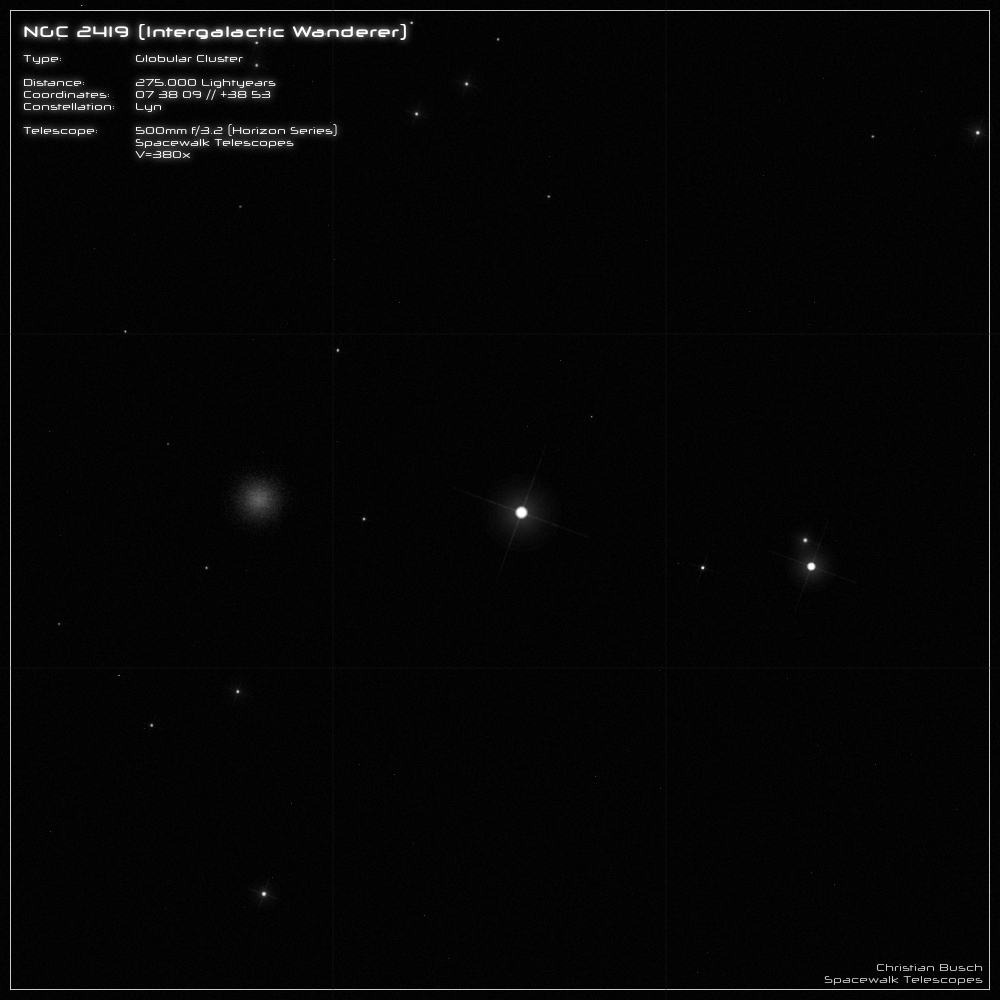NGC 2419 - Intergalactic Wanderer
NGC 2419 is a globular cluster with a brightness of 10.3 mag in the constellation Lynx, which was discovered by F.W. Herschel on New Year's Eve 1788.
It got its (misleading) name due to its very large distance of almost 280,000 light-years, because it was initially assumed that it was not gravitationally
bound to the Milky Way, but instead was moving freely through the universe. Today, however, it is known that NGC 2419 does orbit the Milky Way and
that it takes around 3 billion years to orbit the galactic center. Its nature as a globular cluster was first recognized in 1850, when Lord Rosse was able to
resolve it into individual stars with his 180cm reflecting telescope.
Although it appears quite faint in the sky, NGC 2419 is one of the brightest and most massive globular clusters in our galaxy. The absolute magnitude is
M= -9.4mag, which corresponds to a luminosity of 480,000 suns. The total mass is given as 900,000 solar masses and the diameter as 260 light-years.
If you were in the Andromeda galaxy and pointed a telescope at our Milky Way, NGC 2419 would be one of the easiest globular clusters to observe (similar
to Mayall I for us).
----------------------------------------------------------------------------------------------------------------------------------------------
NGC 2419 is a great object in my 20" f/3 telescope. With good seeing and a high magnification of 380x, I was able to resolve this extremely distant globular
cluster to a certain degree into individual stars. The background becomes brighter towards the center, appears mottled everywhere and in moments of very
calm air, extremely faint stars flash out from time to time both at the edge and in the inner area.
The chain of two bright stars is of course particularly beautiful, forming a wonderful contrast to the globular cluster.

